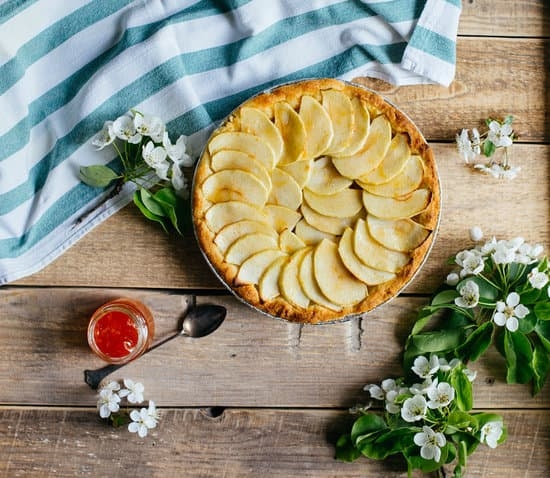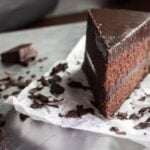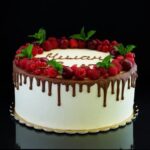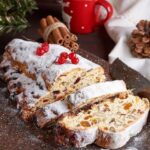Are you looking to elevate your cake decorating skills? Learn how to make icing to decorate cake and take your creations to the next level. Icing is a versatile component used not only to cover the surface of cakes but also to add intricate designs and decorations. Whether you prefer a smooth and creamy buttercream or a crisp royal icing, mastering the art of making icing will open up endless possibilities for your cake decorating endeavors.
When it comes to icing, there are several types to choose from, each with its own unique characteristics and uses. From rich buttercream to elegant fondant and tangy cream cheese icing, understanding the differences between them will help you select the right one for your specific cake project. By exploring various types of icing, you can experiment with different textures, flavors, and techniques to achieve stunning results that suit your personal style and preferences.
To create delicious and visually appealing icing for your cakes, it is crucial to use high-quality ingredients. From sugar and butter to vanilla extract and food coloring, each component plays a vital role in achieving the perfect consistency and flavor profile.
By following step-by-step guides on making buttercream and royal icing from scratch, you can customize your icing according to your taste preferences while honing your skills in the art of cake decorating. Stay tuned for helpful tips on coloring icing using gel food coloring for vibrant hues that will make your creations stand out.
Types of Icing
When it comes to decorating cakes, choosing the right type of icing is essential. Different types of icing can provide varied textures, flavors, and levels of sweetness to your cake. Here are some popular types of icing used for decorating cakes:
- Buttercream: This classic icing is made from butter, powdered sugar, vanilla extract, and milk or cream. Buttercream is versatile and easy to work with, making it a favorite choice for both frosting cakes and piping intricate designs.
- Royal Icing: Made from confectioners’ sugar and egg whites or meringue powder, royal icing hardens when dry, making it ideal for creating delicate decorations like flowers and lace patterns on cakes. It’s commonly used for cookies and gingerbread houses as well.
- Fondant: Fondant is a pliable sugar paste that can be rolled out and draped over cakes to create a smooth finish. It’s perfect for achieving a flawless look on wedding cakes or special occasion desserts. Fondant can also be shaped into intricate figures or decorations.
- Cream Cheese Icing: This tangy and creamy icing is made from cream cheese, butter, powdered sugar, and vanilla extract. Cream cheese icing pairs well with red velvet cakes and carrot cakes due to its rich flavor profile.
Learning how to make icing to decorate cake opens up a world of possibilities for customizing your baked creations based on the specific taste preferences and design requirements of each individual cake. Whether you opt for the simplicity of buttercream or the elegance of fondant, experimenting with different types of icing can elevate your cake decorating skills to new heights.
Ingredients for Making Icing
Sugar
The main ingredient in any type of icing is sugar. Whether you use powdered sugar, granulated sugar, or confectioners’ sugar, it is essential for creating the sweet and smooth texture of icing. Powdered sugar is commonly used for buttercream icing as it dissolves easily and creates a creamy consistency. Granulated sugar can be used for royal icing to create a smooth finish on cakes.
Butter
Butter is another key component in making icing, particularly buttercream icing. It provides a rich and creamy flavor while also helping to stabilize the icing. Make sure to use unsalted butter at room temperature for the best results. Cream cheese can also be used as an alternative to butter for a tangier flavor in cream cheese icing.
Vanilla Extract and Food Coloring
To enhance the flavor of your icing, adding vanilla extract is essential. It gives a subtle sweetness and aroma to the icing that complements the overall taste of the cake. Additionally, food coloring can be added to achieve vibrant colors in your decoration. Gel food coloring works best as it does not affect the consistency of the icing and provides intense hues for decorating cakes with various designs.
Step-by-Step Guide on Making Buttercream Icing
Buttercream icing is a versatile and popular choice for decorating cakes due to its smooth texture and delicious taste. Learning how to make buttercream icing from scratch is simple and allows you to customize the flavor and color according to your preferences. To make your own buttercream icing, you will need unsalted butter, powdered sugar, vanilla extract, and a pinch of salt.
To begin making buttercream icing, start by allowing the unsalted butter to come to room temperature. This will make it easier to cream with the powdered sugar later on. In a mixing bowl, beat the softened butter until it becomes light and fluffy. Gradually add in the powdered sugar, about a cup at a time, mixing well after each addition. This will create a smooth consistency for your buttercream icing.
Once all of the powdered sugar has been incorporated into the butter, add in the vanilla extract and a pinch of salt for flavor. Continue beating the mixture until everything is well combined and the icing has reached your desired consistency. If you prefer a thicker icing for decorating purposes, add more powdered sugar. Similarly, if you want a thinner consistency for spreading onto cakes or cupcakes, you can mix in a small amount of milk or cream.
| Ingredients | Quantity |
|---|---|
| Unsalted Butter | 1 cup (2 sticks) |
| Powdered Sugar | 4 cups |
| Vanilla Extract | 1 teaspoon |
Step-by-Step Guide on Making Royal Icing
Gather Your Ingredients
To make royal icing for decorating cakes, you will need the following ingredients: egg whites, powdered sugar, and cream of tartar. Start by separating the egg whites from the yolks and make sure there are no traces of yolk in the whites. Then, gather your powdered sugar and cream of tartar to prepare for making the royal icing.
Whip Up the Egg Whites
In a clean, dry bowl, beat the egg whites with an electric mixer on high speed until stiff peaks form. This step is crucial in achieving the right consistency for royal icing. Stiff peaks mean that when you lift the beaters out of the mixture, a peak forms and stays upright without collapsing.
Gradually Add Sugar and Cream of Tartar
Once you have achieved stiff peaks with your egg whites, gradually add in the powdered sugar while continuing to beat on low speed. It’s important to add the sugar slowly to avoid clumps and ensure a smooth texture. Also, add a pinch of cream of tartar to stabilize the royal icing and improve its texture as well. Keep beating until everything is well combined and the icing holds its shape when piped.
Now that you have successfully made your royal icing following these steps, you can use it to create intricate decorations on your cakes. Royal icing is perfect for piping delicate designs or intricate details due to its smooth consistency when dried. Experiment with different piping tips and techniques to elevate your cake decorating skills using homemade royal icing.
Tips for Coloring Icing
Coloring icing is a fun and essential part of cake decorating. It can transform a plain cake into a vibrant and eye-catching masterpiece. Gel food coloring is the preferred choice for many bakers when it comes to coloring icing, as it provides intense and vibrant colors without altering the consistency of the mixture. Here are some tips and tricks on how to effectively color icing using gel food coloring:
- Start with a small amount: It’s always best to start with a small amount of gel food coloring and gradually add more until you reach your desired shade. Remember, you can always add more color, but you can’t take it away once it’s mixed in.
- Mix well: To ensure an even color throughout the icing, make sure to mix the gel food coloring thoroughly. You can use a spatula or mixer to achieve a smooth and consistent hue.
- Use toothpicks for precision: If you’re looking to create intricate designs or specific shades, dip a toothpick into the gel food coloring and then swirl it into the icing. This method allows for better control over how much color you’re adding.
There are countless possibilities when it comes to coloring icing for cake decorating. Whether you’re going for pastel shades or bold hues, gel food coloring offers versatility and ease of use. Experimenting with different color combinations and techniques will help you unleash your creativity and elevate your cake decorating skills.
Remember to have fun with the process and don’t be afraid to get creative with your color choices. Cake decorating is all about expressing yourself and delighting others with your creations. With these tips on how to color icing using gel food coloring, you’ll be able to add that extra pop of color to your cakes and impress your friends and family with professional-looking designs.
Decorating Techniques
When it comes to creating beautifully decorated cakes, mastering different decorating techniques is essential. Piping is a popular technique that involves using a piping bag and various tips to create intricate designs on the cake. From swirls and rosettes to writing messages, piping allows you to add personalized touches to your cake. To make icing for piping, it’s important to use a slightly thicker consistency so that the designs hold their shape.
Another technique to explore is flooding, which involves using a runnier icing consistency to flood the surface of the cake with a smooth layer of color. This technique is commonly used in cookie decorating as well but can also be adapted for cakes. Flooding creates a clean and polished look and is great for creating backgrounds or adding solid colors to your design.
Using stencils is another fun way to decorate cakes with icing. Stencils come in various patterns and shapes, allowing you to easily transfer intricate designs onto your cake. Simply place the stencil on top of the cake, secure it in place, and then apply the icing over the stencil with an offset spatula or palette knife.
Once you remove the stencil, you’ll reveal a beautifully detailed design on your cake. Experimenting with different stencils and color combinations can lead to stunning results in your cake decorating endeavors.
Overall, mastering these decorating techniques will take your cake decorating skills to the next level. Whether you’re piping delicate details, flooding vibrant colors, or using stencils for intricate patterns, each technique offers a unique way to express creativity in your cake designs. So grab your homemade icing and practice these techniques to create stunning cakes that are sure to impress at any celebration.
Storage and Shelf Life
When it comes to cake decorating, having leftover icing is a common occurrence. Knowing how to properly store your icing can help extend its shelf life and minimize wastage. The key to storing leftover icing is ensuring it is properly sealed to prevent air exposure, which can cause the icing to dry out or become discolored.
One easy way to store buttercream or royal icing is by transferring it into an airtight container and refrigerating it for up to two weeks. If you have fondant or cream cheese icing leftovers, they can be stored in a resealable plastic bag and placed in the refrigerator for around a week.
The shelf life of different types of icing can vary depending on their ingredients and storage conditions. Buttercream icing, for example, can typically last in the refrigerator for up to two weeks before it starts losing its freshness and flavor.
Royal icing, on the other hand, has a longer shelf life due to its high sugar content and can be kept in an airtight container at room temperature for several months. Fondant can also last quite long when stored properly in a cool, dry place away from direct sunlight.
To make sure that your homemade icing stays fresh for as long as possible, always use clean utensils and containers when handling and storing it. Avoid double-dipping with used utensils as this can introduce bacteria that may shorten the shelf life of your icing. By following these simple storage tips and guidelines on the shelf life of different types of icing, you can enjoy beautiful cake decorations for longer periods without compromising taste or quality.
Conclusion
In conclusion, learning how to make icing to decorate cakes opens up a world of creative possibilities for both beginner and experienced bakers. By understanding the different types of icing available, such as buttercream, royal icing, fondant, and cream cheese icing, you can tailor your choice based on the desired outcome of your cake decoration. Each type of icing has its own unique texture and flavor profile, allowing you to experiment and find the perfect match for your cake projects.
Mastering the art of making icing from scratch gives you full control over the ingredients used in your creations. Whether you prefer a rich and creamy buttercream or a delicate royal icing for intricate designs, having a solid foundation in making icing will elevate your baking skills. With essential ingredients like sugar, butter, vanilla extract, and food coloring at your disposal, you can customize your icing to suit any theme or occasion.
Furthermore, honing your decorating techniques with homemade icing can transform a simple cake into a stunning centerpiece. From piping intricate designs to using stencils for precise patterns, there are endless ways to express your creativity through cake decoration. Remember to store leftover icing properly to maintain its freshness and shelf life. So roll up your sleeves, gather your supplies, and let your imagination run wild as you embark on creating beautifully decorated cakes with homemade icing.
Frequently Asked Questions
What Kind of Icing Is Best for Decorating Cakes?
The best icing for decorating cakes depends on the desired outcome. Royal icing is great for intricate designs because it hardens quickly, while buttercream icing is versatile and easy to work with.
How to Make the Perfect Icing for a Cake?
To make the perfect icing for a cake, start by choosing the right type of icing based on your preferences and needs. Follow a recipe that includes the correct ratios of butter, sugar, flavorings, and liquids to achieve the desired texture and taste.
How Do You Mix Icing Sugar for Decorations?
Mixing icing sugar for decorations requires precision and patience. Start by sifting the icing sugar to remove any lumps and ensure a smooth consistency. Gradually add liquid (such as milk or water) while stirring constantly until you reach the desired thickness for piping or spreading on your cake.

Welcome to our cake decorating blog! My name is Destiny Flores, and I am the proud owner of a cake decorating business named Cake Karma. Our mission is to provide delicious, beautiful cakes for all occasions. We specialize in creating custom cakes that are tailored specifically to each customer’s individual needs and tastes.





